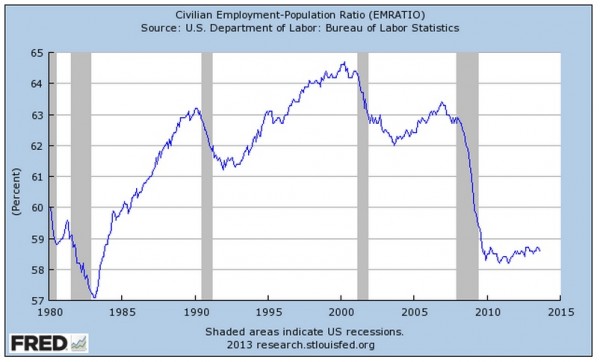 James Pethokoukis explores for readers of the American Enterprise Institute’s policy blog the disappointing jobs data plaguing the American economy.
James Pethokoukis explores for readers of the American Enterprise Institute’s policy blog the disappointing jobs data plaguing the American economy.
How do you know the August jobs report was pretty bad? When the best thing you can say is that it might have met Wall Street expectations if not for a temporary shutdown in the port industry last month. (The motion picture and sound recording industry lost 22,000 jobs in August, according to the BLS.) Sure, the White House can argue, as economic adviser Jason Furman did right after the report’s release, that the “incoming economic data broadly suggest that the recovery continues to make progress.” But consider the following:
1. This was the jobs report that was supposed to reflect an economy kicking into higher gear. Goldman Sachs, for instance, was looking for 200,000 net new jobs. And whisper estimates were even higher. Instead, the economy added just 169,000 jobs vs. the 180,000 consensus forecast.
2. What’s more, June and July were revised down by 74,000 jobs, putting the three-month average at a paltry 148,000.
3. Even at 169,000 jobs a month, it would take an unbelievable 9 years and 10 months to return to pre-Great Recession employment levels, according to Brookings. See you in 2023 — assuming no recessions between now and then.
4. Sure, the unemployment rate fell to 7.3%. But that’s only because the labor force participation rate fell to a 35-year low. If it were still at January 2009 levels, the unemployment rate would be 10.8%. As RDQ Economics cautions, “This continued fall in participation should give pause to those who argue that the decline is cyclical and will be reversed.” In other words, the US faces a permanently larger pool of jobless Americans.


